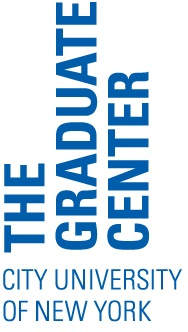How to Write a Research Statement

Photo by Nick Youngson on Alpha Stock Images
Research statements have become a core component of faculty job applications. A research statement is a map for your career as a researcher, expanding on how you describe your research in your cover letter. A research statement should document a three- to five-year plan that lays out attainable goals. It should explain your past, present, and future research projects, as well as any major accomplishments. Make sure to highlight your strengths and the importance of your future work, but be realistic about what you can achieve—search committees will know the difference.
Tips and Considerations for Writing an Effective Research Statement
Length
The length of a research statement varies by discipline. Although the average is three pages, it may be slightly shorter (1-2 pages) in the humanities or slightly longer (3-4 pages) in the social sciences and STEM fields.
Organization
Research statements begin with an introductory paragraph that describes your overall work and field, followed by body paragraphs that narrow down into your specific area of expertise and projects.
While some research statements are organized topically by project, most are ordered chronologically. Begin by discussing any past work, such as your dissertation; next describe any current research projects; end with ideas you have for the future. Some applicants may choose to use headings to further delineate among projects or clarify whether certain paragraphs focus on past, present, or future work.
Depending on your discipline, you may choose to include an executive summary at the end of your statement, which summarizes your main research goals, methodology, and qualifications for the position. STEM students may also incorporate relevant graphics that help clearly demonstrate results at a glance.
Audience
Research statements should be written for generalists who would make up a search committee. Contextualize your work within your field, avoid jargon, and make sure your work can be understood across your discipline.
Style
Avoid long paragraphs. Paragraphs should never take up more than half a page and may be even shorter. If you have a lot to say about one particular project, that section might be broken up into 2-3 paragraphs to help keep your reader engaged.
Research statements should be written in the first-person and in the active voice. Both of these rhetorical strategies will ensure that you remain the focus of the statement. Your writing should be clear, concise, and assertive.
Example of passive vs. active voice:
Passive voice: The data was collected over a series of three experiments.
Active voice: I collected the data over a series of three experiments.
Topics to Cover in Your Research Statement
The Subject and Importance of Your Research
Describe your general interest area, specific areas of expertise, and methodologies. Explain exactly what your research is and why it matters. How is your work innovative? What contribution does it make to existing bodies of knowledge? What major problems will you solve?
Past, Current, and Future Research Projects
Search committees expect you to discuss multiple projects. While you will certainly spend a paragraph or two on your dissertation, you should also have additional works-in-progress, as well as two or three defined projects you will conduct in the future. You can also describe any projects you’ve completed in the past. Be sure to draw connections between projects and demonstrate how your future work will build off the work you’ve already done. This will help prove that the project is feasible and that you are qualified to lead it.
Major Accomplishments
Describe any publications you have in a sentence or two by explaining what knowledge they contribute to the field. You should also acknowledge any major grants received, sources of funding secured, or awards won.
Additional Considerations for STEM Applicants
In a research statement, STEM applicants must demonstrate that their work is independent from the work of their PI. It may be helpful to describe how you will involve students of your own in your lab. If you require lab equipment and/or support staff, make sure all of your planned research can be accommodated by the institution as is, or identify how you will secure funding to obtain additional resources. Identify potential sources of external funding for your work, as well as potential collaborators within the department, school, or industry. Try to be as specific as possible by naming particular organizations or researchers.




